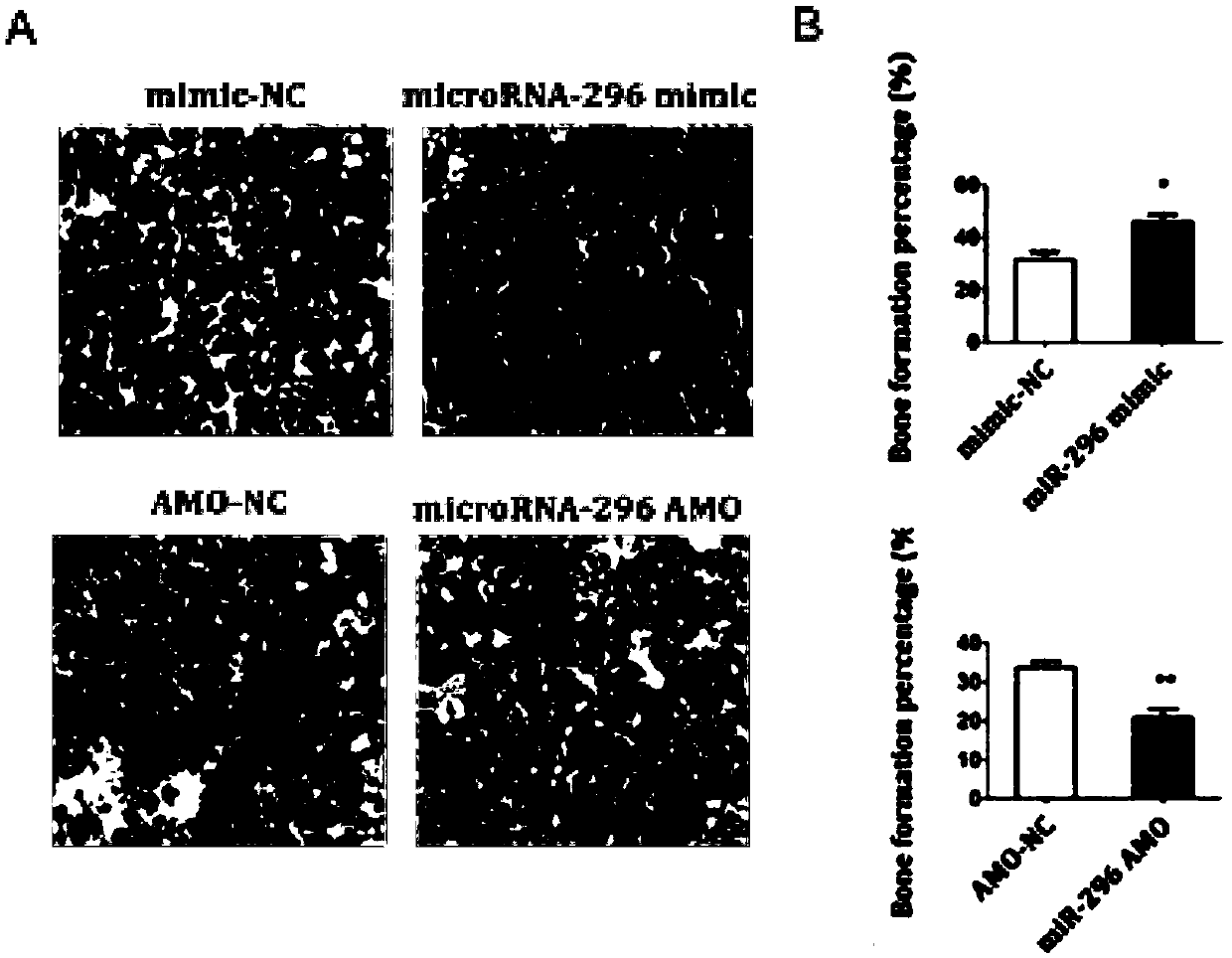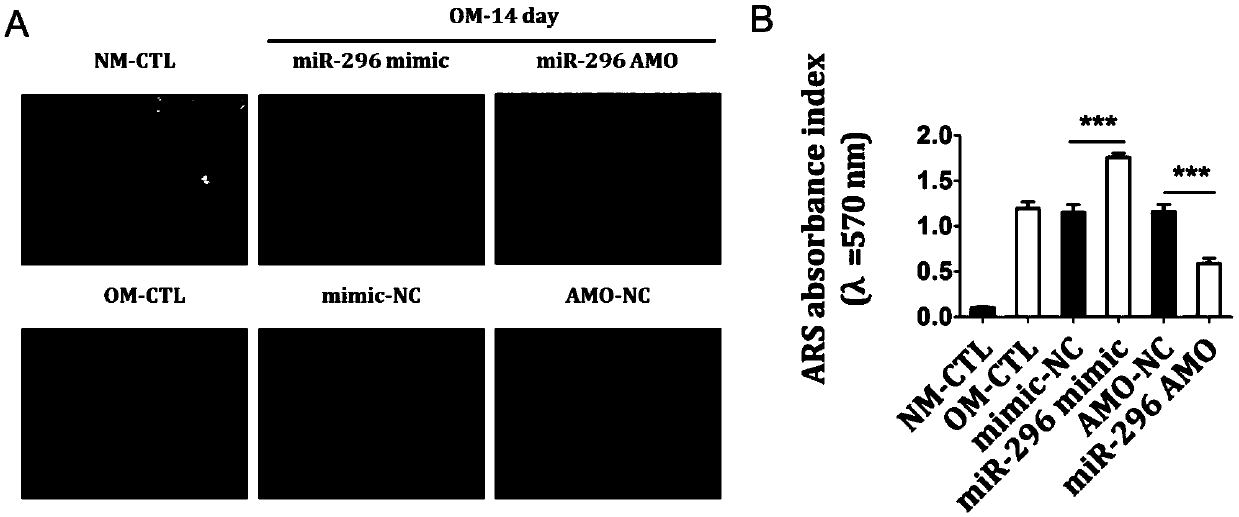Application of miR-296 and simulant thereof in promoting osteogenic differentiation of bone marrow mesenchymal stem cells and bone formation
A technology for bone marrow mesenchymal and osteogenic differentiation, applied in the field of medicine, can solve problems such as many complications, and achieve the effect of increasing bone formation and promoting the osteogenic differentiation of bone marrow mesenchymal stem cells
- Summary
- Abstract
- Description
- Claims
- Application Information
AI Technical Summary
Problems solved by technology
Method used
Image
Examples
Embodiment 1
[0037] Example 1: miR-296 promotes BMSCs bone formation in vivo
[0038] 1 Experimental method
[0039] 1.1 The BMSCs transfected with miR-296 in vitro were subcutaneously transplanted by the new biomaterial hydroxyapatite for 8 weeks, and the effect of miR-296 transfection on bone formation in graft tissue was observed by Masson staining
[0040] 1.2 Experimental grouping design: the experiment was divided into 4 groups: the experiment was divided into the following four groups according to the transfection control group and the treatment group: miR-296 mimic, mimic-NC, miR-296 AMO, AMO-NC
[0041] 1.3 Experimental testing items: Masson staining
[0042] 2 Observations
[0043] like figure 1 As shown, compared with the mimic-NC group, the bone formation at the transplantation site was significantly increased in the miR-296 mimic group, whereas in the miR-296 AMO group, the bone formation at the transplantation site was significantly decreased.
Embodiment 2
[0044] Example 2: miR-296 regulates the osteogenic differentiation of bone marrow mesenchymal stem cells
[0045] 1 Experimental method
[0046]1.1 Alizarin red staining to detect the number of calcium nodules formed by osteoblasts and alkaline phosphatase staining to indirectly reflect the activity of the marker enzyme ALP of osteoblasts
[0047] 1.2 Experiment grouping design: The experiment was divided into the following four groups according to the transfection control group and treatment group: miR-296 mimic, mimic-NC, miR-296 AMO, AMO-NC.
[0048] 1.3 Transfection method: seed bone marrow mesenchymal stem cells in a well plate, and perform transfection when the confluence of the cells reaches about 40%. Discard the culture medium in the well plate, replace with fresh serum-free OPTI-DMEM medium, starve the cells for 2 hours, and start transfection after 2 hours. Mix microRNA mimic and AMO with transfection reagent X-treme well and add to the well plate, so that the fin...
Embodiment 3
[0062] Example 3: miR-296 promotes the expression level of osteogenesis-related proteins
[0063] 1 Experimental method
[0064] 1.1 Western blot was used to detect the expression levels of osteogenesis-related proteins in BMSCs after 7 days of transfection and osteogenesis induction
[0065] 1.2 Experimental grouping design: the experiment was divided into 4 groups: the experiment was divided into the following four groups according to the transfection control group and the treatment group: miR-296 mimic, mimic-NC, miR-296 AMO, AMO-NC
[0066] 1.3 Transfection method: same as Example 1
[0067] 1.4 Osteogenic induction method: same as Example 1
[0068] 1.5 Experimental testing items: Western blot (Western blot) experiment
[0069] 2 Observations
[0070] Seven days after osteogenesis induction, Western blot experiments were performed to detect the expression levels of osteogenesis-related proteins Runx2 and Osterix. like Figure 4 As shown, compared with mimic-NC, the ...
PUM
 Login to View More
Login to View More Abstract
Description
Claims
Application Information
 Login to View More
Login to View More - R&D
- Intellectual Property
- Life Sciences
- Materials
- Tech Scout
- Unparalleled Data Quality
- Higher Quality Content
- 60% Fewer Hallucinations
Browse by: Latest US Patents, China's latest patents, Technical Efficacy Thesaurus, Application Domain, Technology Topic, Popular Technical Reports.
© 2025 PatSnap. All rights reserved.Legal|Privacy policy|Modern Slavery Act Transparency Statement|Sitemap|About US| Contact US: help@patsnap.com



